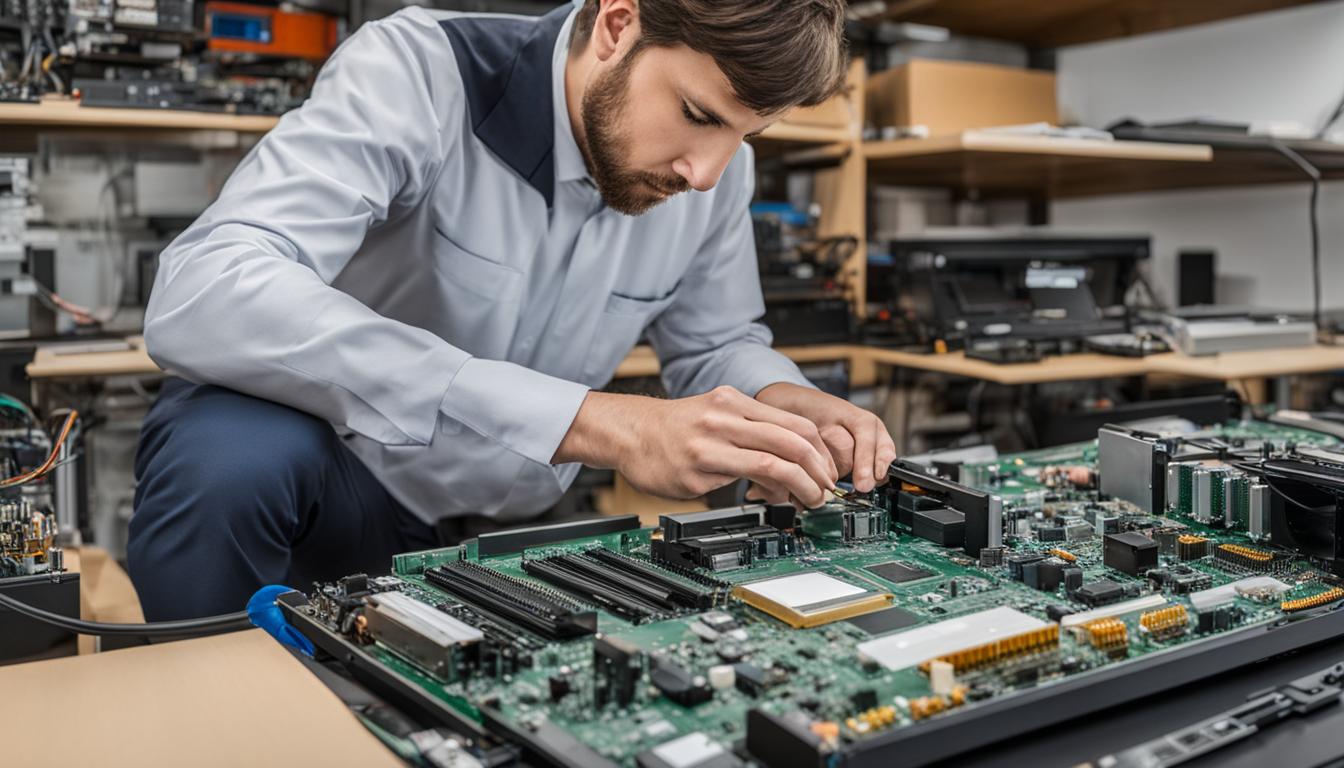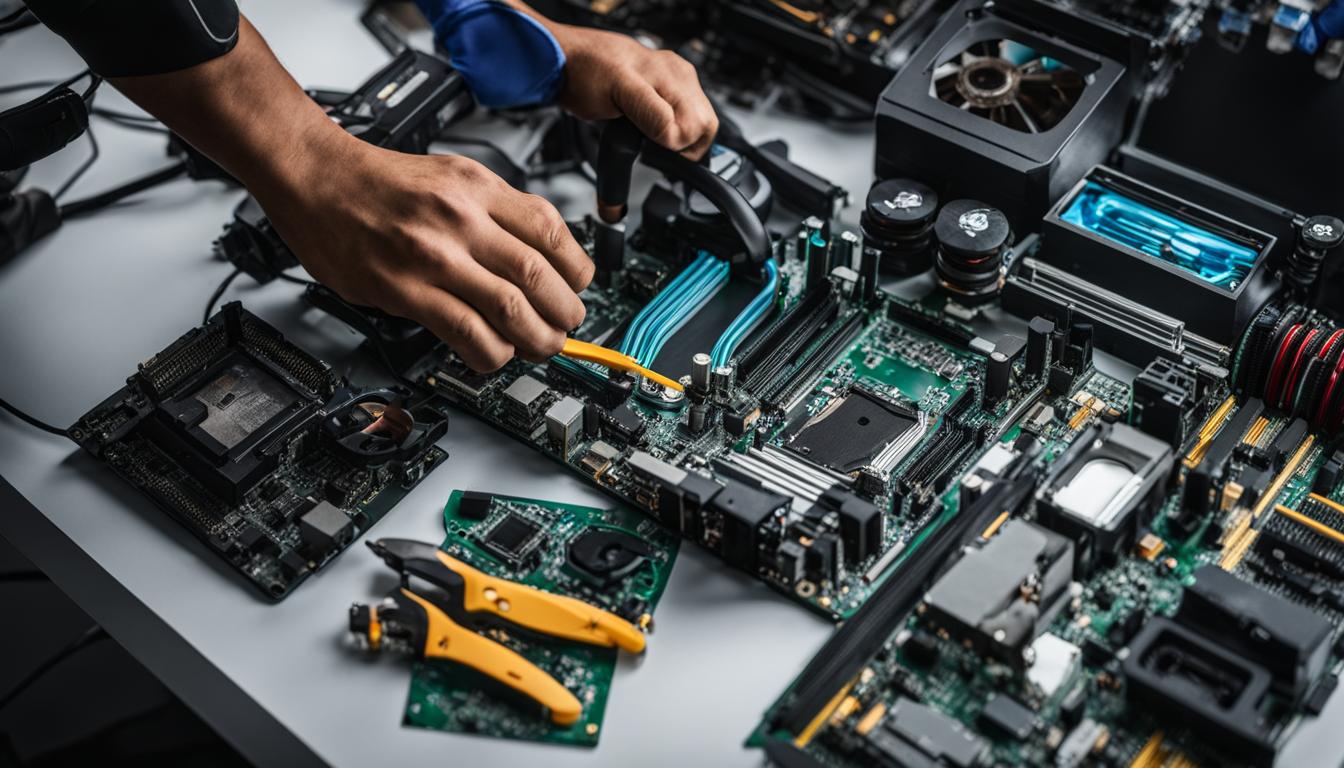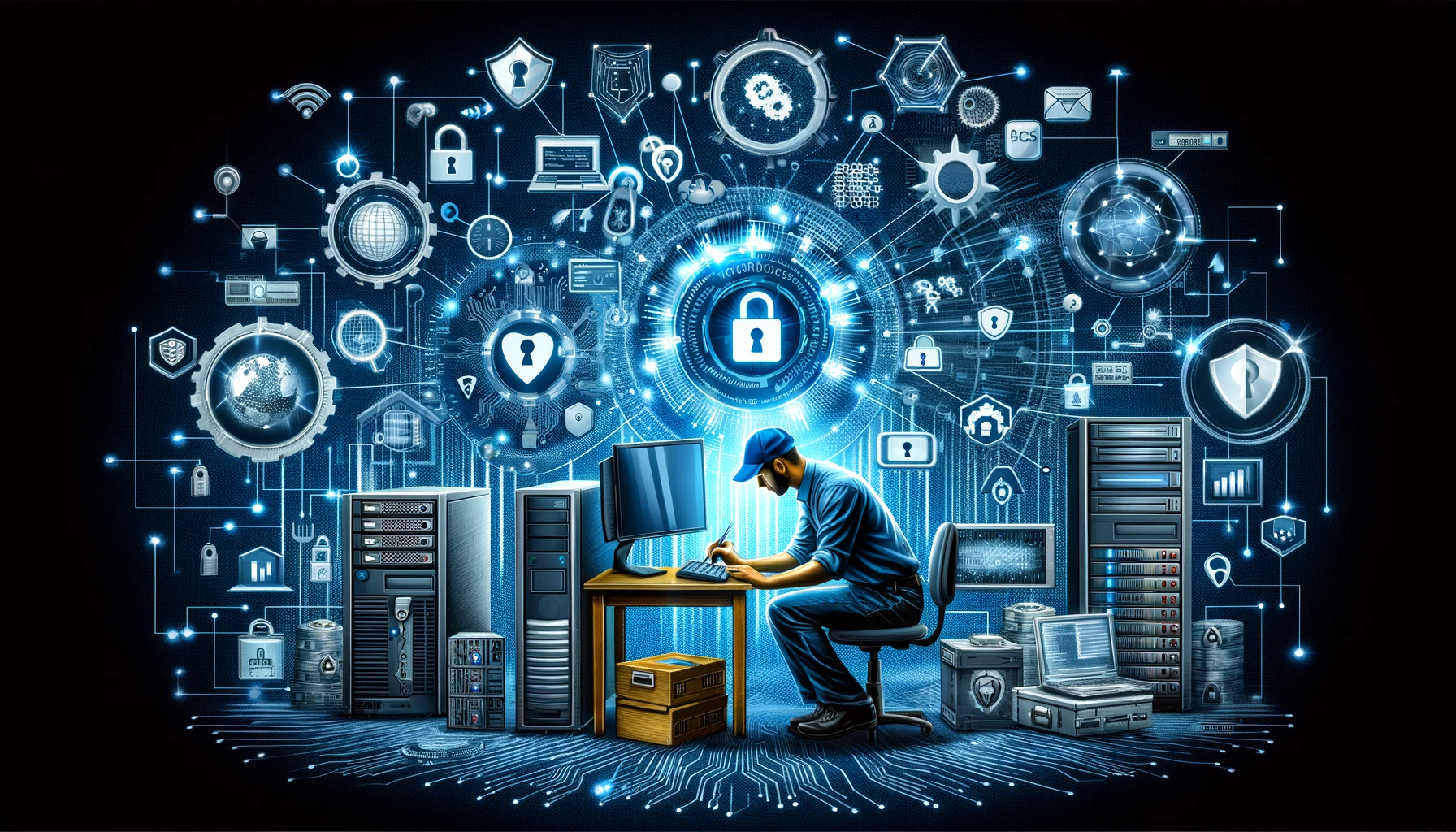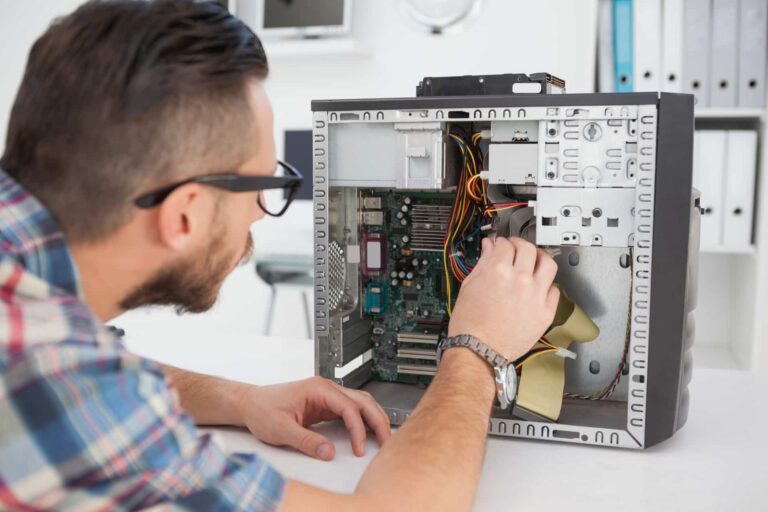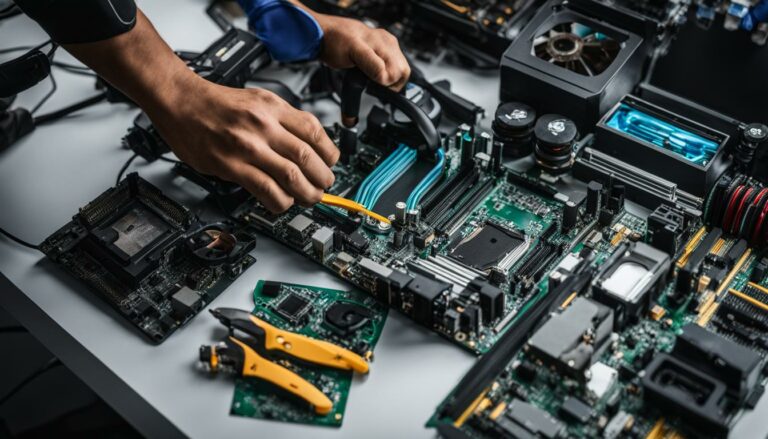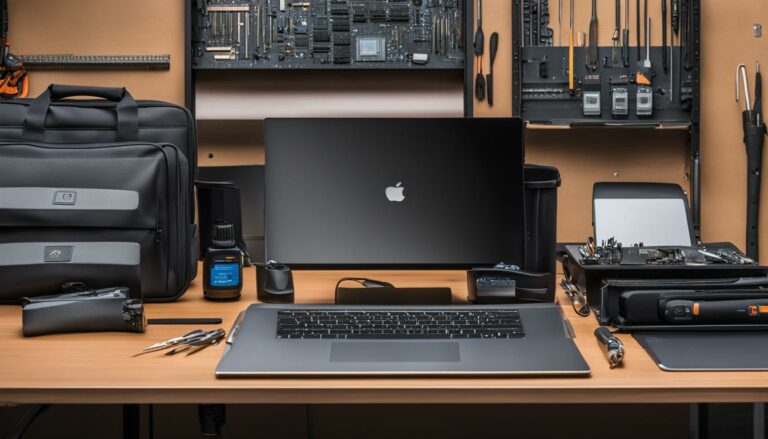A guide to sustainable practices in computer servicing
Are you looking for ways to make your computer servicing more sustainable? As technology continues to advance, it’s crucial to adopt eco-friendly practices in computer repair and maintenance. By implementing green IT solutions, you can minimize the environmental impact of your operations and contribute to a greener world.
In this comprehensive guide, we will explore the importance of sustainable computer servicing and provide you with practical tips on how to achieve it. From reducing energy consumption to choosing energy-efficient devices, we will cover all aspects of green IT maintenance.
Join us as we delve into the impact of IT on resources and the environment, highlighting the need for sustainable practices. Discover how strategic procurement decisions and equipment choices can contribute to a more sustainable future. Learn how upgrading devices and optimizing data centers can extend their lifespan and reduce energy consumption.
Furthermore, we will explore sustainable practices in user support, from power management to promoting remote work. We will also discuss the role of businesses in promoting sustainability in their processes, emphasizing the benefits of a closed-loop supply chain.
Whether you are an individual looking to make a difference or a business seeking to integrate sustainable practices into your operations, this guide is for you. Together, let’s embrace sustainable computer servicing and pave the way for a more environmentally conscious tech support industry.
The Impact of IT on Resources and the Environment
Information technology (IT) plays a significant role in our modern world, but it also has a profound impact on resources and the environment. The energy consumption and greenhouse gas emissions associated with IT equipment have become pressing concerns in the quest for sustainable practices. To address these challenges, it is crucial to adopt sustainable IT practices that minimize resource depletion and reduce carbon footprints.
Energy consumption is a primary environmental concern in the IT industry. The constant use of computers, servers, and other devices contributes to high energy demands, which in turn leads to increased greenhouse gas emissions. To combat this, organizations and individuals can take steps to improve energy efficiency. This includes using energy-saving features on devices, optimizing power management settings, and replacing inefficient equipment with more energy-efficient alternatives.
In addition to energy consumption, the production and disposal of IT equipment contribute to resource depletion and environmental degradation. The extraction of raw materials and manufacturing processes required to produce devices have a significant ecological footprint. To address this, adopting sustainable procurement practices is essential. This involves considering the lifecycle cost of equipment, choosing energy-efficient devices, and exploring options such as remanufactured or refurbished equipment to extend their lifespan.
To summarize, the impact of IT on resources and the environment cannot be ignored. It is crucial to adopt sustainable IT practices that reduce energy consumption and greenhouse gas emissions. By improving energy efficiency, making informed procurement choices, and extending the lifespan of devices, we can minimize the environmental impact of IT and contribute to a more sustainable future.
Sustainable Procurement and Equipment Choices
In today’s fast-paced world, it is crucial for computer servicing companies to align their practices with sustainability goals. Sustainable procurement plays a significant role in minimizing environmental impact and promoting greener IT solutions. By making strategic equipment choices and considering the lifespan of devices, businesses can contribute to a more sustainable future.
One key aspect of sustainable procurement is strategic alignment, which involves assessing whether the chosen equipment aligns with the company’s sustainability objectives. This includes evaluating the environmental impact of the manufacturing process, the energy efficiency of the devices, and the potential for recycling or repurposing at the end of their lifecycle. By selecting equipment that meets these criteria, businesses can reduce their ecological footprint and demonstrate their commitment to sustainable practices.
Another important consideration in sustainable procurement is the lifespan of the equipment. Opting for devices with longer lifespans not only reduces the frequency of replacements but also minimizes electronic waste. Businesses can achieve this by choosing high-quality, durable devices that are designed to last. Additionally, remanufactured or refurbished equipment can be a cost-effective and environmentally friendly alternative to purchasing new devices. By extending the lifespan of equipment, businesses can maximize their investment while reducing their impact on the environment.
Table: Comparison of Energy Efficiency Ratings
| Device | Energy Efficiency Rating | Annual Energy Consumption (kWh) |
|---|---|---|
| Device A | 3 stars | 120 |
| Device B | 4 stars | 90 |
| Device C | 5 stars | 60 |
Lastly, energy efficiency is a crucial factor to consider when making sustainable procurement choices. Energy-efficient devices consume less power, resulting in reduced energy consumption and cost savings. When evaluating equipment options, businesses should look for energy-efficient certifications or ratings, such as Energy Star. The table above showcases a comparison of energy efficiency ratings for different devices, highlighting the potential energy savings associated with choosing more efficient options.
By implementing sustainable procurement practices, businesses can play a significant role in reducing their environmental impact. Strategic alignment, considering equipment lifespan, and selecting energy-efficient devices are essential steps towards achieving a more sustainable computer servicing industry. Every choice made in sustainable procurement contributes to a greener and more environmentally conscious future.
Extending the Lifespan of Devices through Upgrades
As technology advances at a rapid pace, it’s important to consider the environmental impact of our electronic devices. One effective way to reduce electronic waste and promote sustainability in computer servicing is by extending the lifespan of devices through upgrades. By upgrading key components, such as replacing traditional hard drives with solid-state drives or adding graphics processing units (GPUs), we can improve the efficiency and performance of our devices while minimizing the need for new purchases.
One of the significant benefits of device upgrades is the energy savings they offer. Upgrading to energy-efficient components can result in lower power consumption, reducing both operating costs and environmental impact. For example, replacing an older hard drive with a solid-state drive can improve energy efficiency by reducing mechanical power consumption, thus contributing to energy savings and a greener IT infrastructure.
Implementing a comprehensive asset management strategy is essential for sustainable IT practices. It allows organizations to extend the lifespan of devices through upgrades, as well as better track and manage their devices’ performance and end-of-life cycle. By proactively identifying devices that would benefit from upgrades, businesses can prioritize sustainable choices and optimize their resource allocation. Effective asset management also ensures that upgrades are implemented in a timely manner, maximizing the benefits gained from improved technology.
| Device | Upgrade | Energy Savings |
|---|---|---|
| Laptop | Replace hard drive with solid-state drive | Up to 30% reduction in power consumption |
| Desktop | Add graphics processing unit (GPU) | Improved processing efficiency, reducing energy usage |
| Server | Upgrade to energy-efficient processors | Reduced power consumption and cooling requirements |
By extending the lifespan of devices through upgrades, businesses can not only reduce their carbon footprint but also achieve significant cost savings. Rather than disposing of functional devices prematurely, upgrades offer a sustainable solution that maximizes the value of existing technology investments. With the increasing focus on sustainability and the growing demand for environmentally conscious tech support, extending the lifespan of devices through upgrades is a vital step towards a more sustainable future.
Data Center Optimization and Cloud Migration
In today’s digital world, data centers play a crucial role in supporting the vast amount of data generated and stored by businesses. However, these data centers can consume a significant amount of energy, contributing to high operational costs and environmental impact. To address these challenges, organizations are increasingly focusing on data center optimization and cloud migration to enhance efficiency and reduce energy consumption.
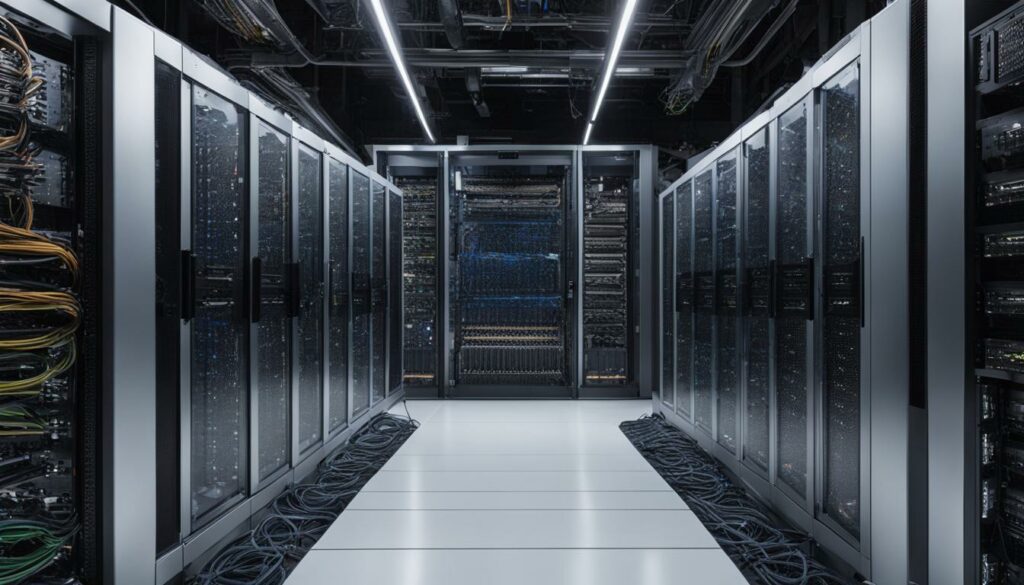
One key aspect of data center optimization is harnessing outside air cooling, also known as free cooling. By utilizing the cooler air from the environment to regulate temperatures within the data center, organizations can reduce their reliance on energy-intensive cooling systems. This not only leads to significant cost savings but also minimizes the carbon footprint associated with traditional cooling methods.
Automating controls within the data center is another strategy for improving efficiency. By implementing intelligent systems that regulate power usage, organizations can ensure that energy is only consumed when necessary, reducing wasted electricity and lowering operational costs. Separating hot and cold aisles within the data center is yet another technique to enhance cooling efficiency, preventing hot and cold air from mixing and optimizing the airflow to maintain optimal temperature levels.
Cloud migration
Cloud computing offers a multitude of benefits for businesses, including enhanced data security, scalability, and flexibility. From an environmental perspective, cloud migration can also be a sustainable solution. By shifting workloads and applications to the cloud, organizations can reduce their reliance on in-house data centers, leading to lower energy consumption and a smaller carbon footprint.
Cloud providers are increasingly adopting renewable energy sources to power their data centers, further contributing to environmental sustainability. By leveraging the cloud, businesses can take advantage of these eco-friendly initiatives and align their IT infrastructure with their green goals.
| Benefits of Data Center Optimization and Cloud Migration |
|---|
| Reduced energy consumption |
| Lower operational costs |
| Minimized carbon footprint |
| Enhanced data security |
| Scalability and flexibility |
Data center optimization and cloud migration are essential strategies for organizations looking to achieve greater sustainability in their IT practices. By optimizing data center operations through outside air cooling and automation, businesses can reduce energy consumption and costs while minimizing their environmental impact. Cloud migration offers additional benefits, including enhanced security and scalability, while reducing reliance on energy-intensive in-house data centers. Embracing these practices not only contributes to a greener future but also positions businesses for long-term success in an increasingly digital world.
Sustainable practices in user support
In today’s digital era, sustainable practices in user support play a crucial role in reducing environmental impact and promoting a greener world. By implementing simple yet effective strategies, individuals and businesses can contribute to a more sustainable future. Let’s explore some eco-friendly practices in user support.
Power Management
One of the easiest ways to reduce energy consumption and minimize the carbon footprint of computers is through power management. Encouraging users to set their computers to sleep mode or hibernate when not in use can significantly save energy. Additionally, configuring devices to automatically power off after a certain period of inactivity can further enhance power savings. By adopting power management practices, users can make a tangible difference in reducing energy consumption and promoting sustainability.
Smart Power Strips
Smart power strips are innovative solutions that help combat vampire energy, also known as standby power. These power strips, equipped with intelligent technology, can detect when devices are not in use and automatically cut off power to them. By eliminating standby power, smart power strips prevent unnecessary energy consumption and reduce electricity bills. Encouraging users to invest in these smart solutions can make a significant impact on sustainability efforts.
Remote Work
The rise of remote work has not only provided flexibility and convenience but also contributed to sustainable practices. By promoting remote work arrangements, businesses can reduce commuting-related emissions, thereby minimizing their carbon footprint. Remote work also has the potential to decrease energy consumption in traditional office spaces, leading to further environmental benefits. Encouraging employees to work remotely, when possible, can contribute to a more sustainable and eco-friendly work culture.
By incorporating power management techniques, utilizing smart power strips, and embracing remote work, individuals and businesses can actively contribute to sustainable practices in user support. These small yet impactful steps can collectively make a significant difference in reducing energy consumption and preserving the environment for future generations.

Promoting sustainability in business processes
In today’s world, businesses play a crucial role in driving sustainable practices and promoting environmental responsibility. As the global population continues to grow and resources become scarcer, it is imperative for businesses to balance economic growth with sustainability. Adopting a closed-loop supply chain and incorporating sustainable practices into business processes can help achieve this delicate equilibrium.
When considering sustainability in business, it’s important to strike a balance between economic growth and environmental conservation. While economic growth is essential for businesses to thrive, it should not come at the expense of the planet. By implementing sustainable practices such as reducing waste generation, minimizing carbon emissions, and optimizing resource utilization, businesses can contribute to a greener world while still maintaining profitability.
A closed-loop supply chain is a key component of sustainable business processes. It involves minimizing waste and maximizing resource efficiency by reusing, recycling, or repurposing materials throughout the entire product lifecycle. By adopting a closed-loop approach, businesses can reduce their ecological footprint and minimize the negative impact of their operations on the environment.
The Benefits of a Closed-Loop Supply Chain:
- Reduced waste generation and landfill usage.
- Cost savings through material reuse and recycling.
- Improved brand reputation and customer loyalty.
- Increased resilience to supply chain disruptions.
- Enhanced regulatory compliance, meeting sustainability standards.
By prioritizing sustainability in their business processes, companies can set a positive example for their employees, customers, and other stakeholders. This commitment to environmental responsibility not only helps protect the planet but also fosters a sense of purpose and pride within the organization. Moreover, sustainable practices can lead to long-term cost savings, improved operational efficiency, and increased market competitiveness.
| Sustainability in Business Processes | Economic Growth vs. Sustainability | Closed-Loop Supply Chain |
|---|---|---|
| Striking a balance between profitability and environmental responsibility. | Ensuring economic growth does not come at the expense of the planet. | Minimizing waste and maximizing resource efficiency through reusing, recycling, and repurposing materials. |
| Implementing sustainable practices to reduce waste generation and carbon emissions. | Prioritizing sustainable business processes to protect the environment. | Benefits: reduced waste, cost savings, improved brand reputation, increased resilience, enhanced compliance. |
| Setting a positive example for employees, customers, and stakeholders. | Fostering a sense of purpose and pride within the organization. | Long-term cost savings, improved efficiency, increased market competitiveness. |
Ultimately, promoting sustainability in business processes is not just an ethical choice but a strategic one. As consumers become increasingly conscious of environmental issues, businesses that prioritize sustainability are more likely to attract and retain customers. By embracing sustainable practices, businesses can become leaders in their industries, driving positive change and contributing to a more sustainable future.
Conclusion
In conclusion, embracing sustainable IT practices is crucial for reducing the environmental impact of computer servicing and promoting a greener world. By adopting environmentally conscious tech support, businesses and individuals can contribute to a more sustainable future.
Throughout this article, we have explored various aspects of sustainable computer servicing, from understanding the environmental impact of IT on resources to making strategic procurement choices. We have emphasized the importance of extending the lifespan of devices through upgrades and optimizing data centers for energy efficiency.
Furthermore, we have highlighted the role of user support in promoting sustainable practices, such as power management and remote work. Additionally, we discussed how businesses can integrate sustainability into their processes, including implementing a closed-loop supply chain and incorporating sustainable practices into their strategies.
By prioritizing sustainable IT practices, we can minimize energy consumption, reduce greenhouse gas emissions, and minimize the ecological footprint of technology. Let us all work together to create a more sustainable future.
FAQ
What is sustainable computer servicing?
Sustainable computer servicing refers to the practice of repairing and maintaining computers in an environmentally responsible manner. It involves adopting eco-friendly practices to reduce the environmental impact of technology.
Why is it important to adopt eco-friendly practices in computer repair and maintenance?
Adopting eco-friendly practices in computer repair and maintenance is important to reduce the environmental impact of technology. It helps minimize resource depletion, reduce carbon footprints, and contribute to a greener world.
What is the environmental impact of information technology?
Information technology has a significant environmental impact, including high energy consumption and greenhouse gas emissions associated with IT equipment. Adopting sustainable IT practices is crucial to mitigate these impacts.
How can I practice sustainable procurement in computer servicing?
Sustainable procurement in computer servicing involves considering the lifecycle cost of equipment and choosing energy-efficient devices. Options such as remanufactured or refurbished equipment can also be explored to minimize environmental impact.
How can I extend the lifespan of my devices through upgrades?
You can extend the lifespan of devices by upgrading them. For example, replacing traditional hard drives with solid-state drives or adding graphics processing units (GPUs) can improve processing efficiency. Upgrades not only save energy but also prove to be cost-effective.
How can data centers be optimized for energy efficiency?
Data centers can be optimized for energy efficiency by harnessing outside air cooling, automating controls, and separating hot and cold aisles. Additionally, cloud migration can help reduce energy consumption and maximize resource efficiency.
What are some sustainable practices in user support?
Sustainable practices in user support include setting computers to sleep mode, using smart power strips to reduce vampire energy, and promoting remote work to reduce commuting-related emissions. These individual actions contribute to green IT.
What is the role of businesses in promoting sustainability in their processes?
Businesses play a crucial role in promoting sustainability in their processes. They need to consider factors such as economic growth, ecological footprint, and production/consumption levels. Adopting a closed-loop supply chain and incorporating sustainable practices into business strategies are essential.



